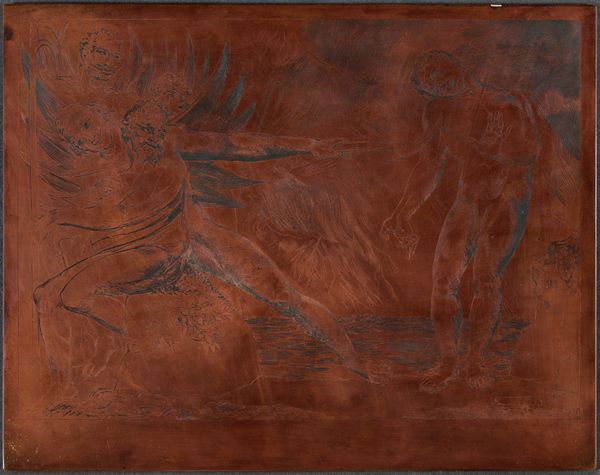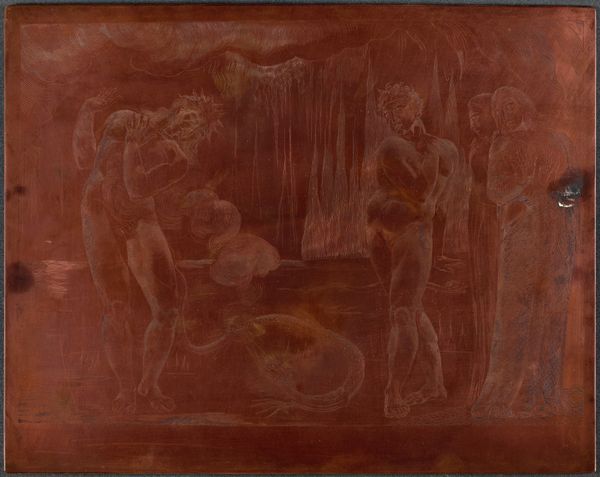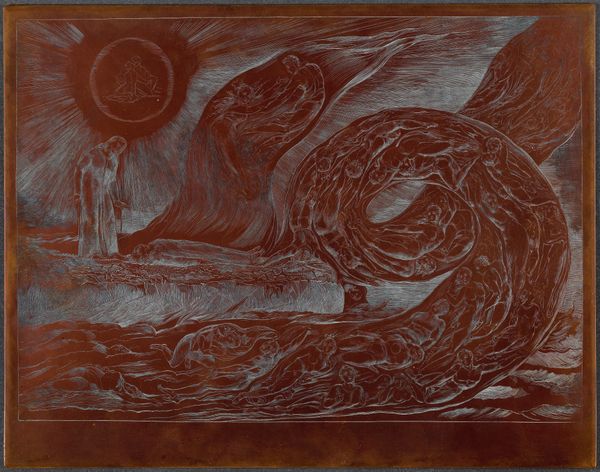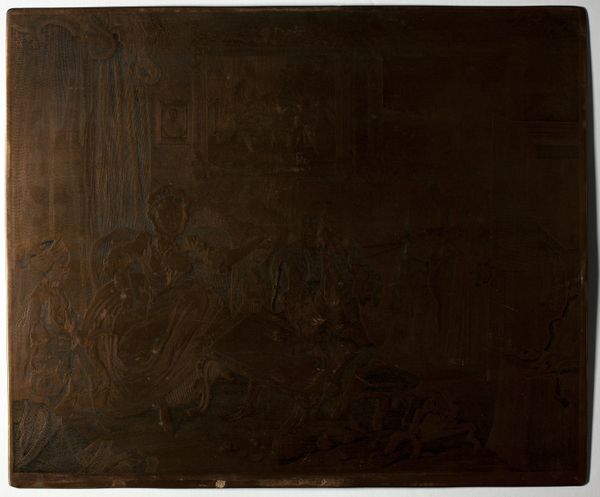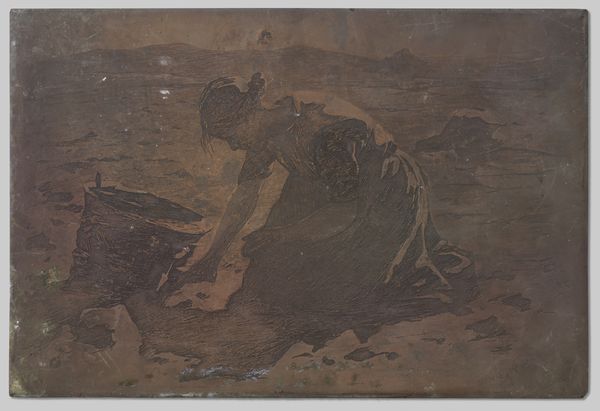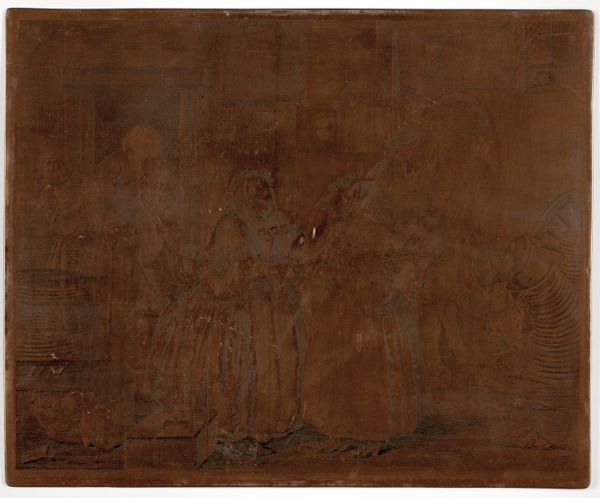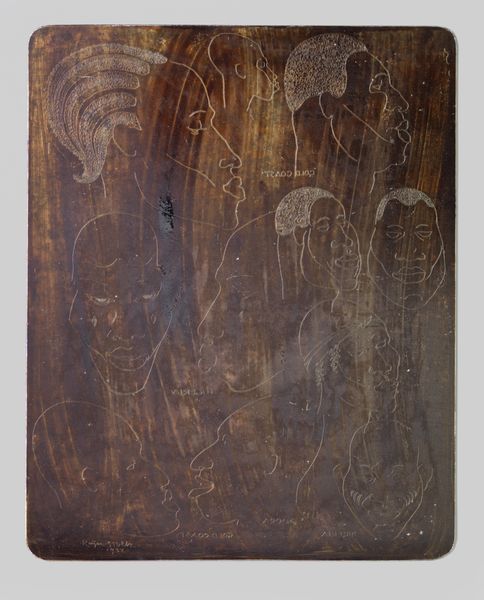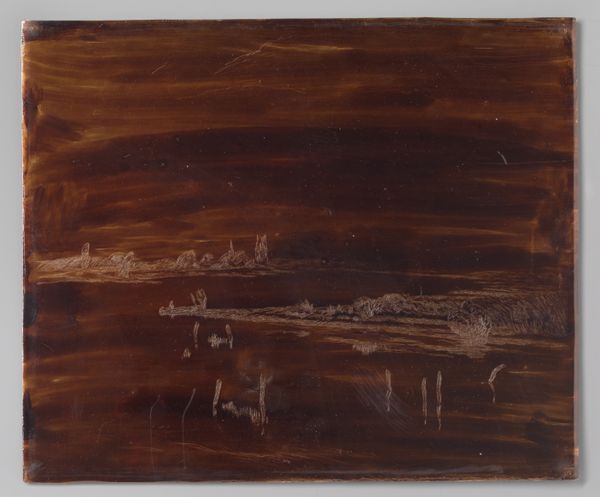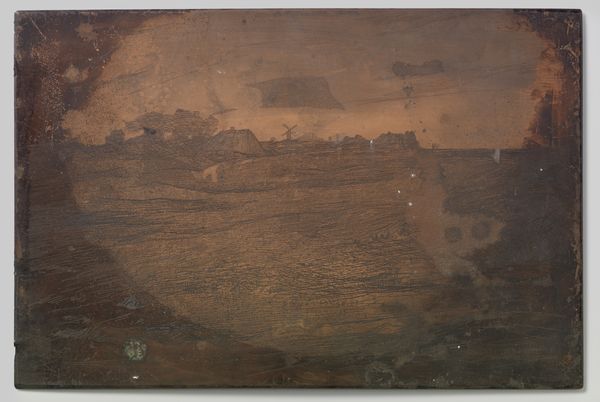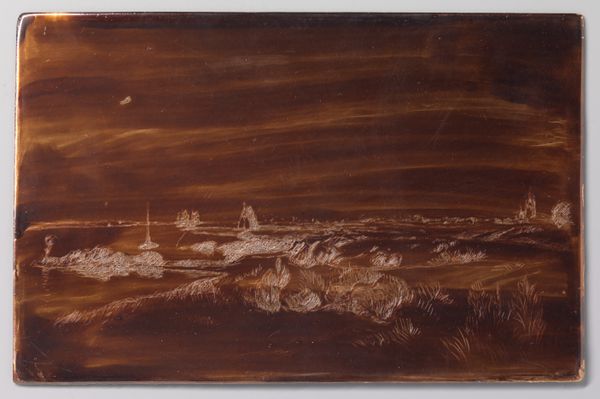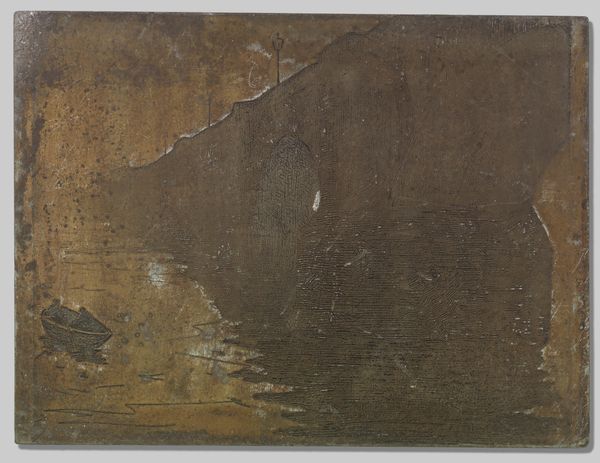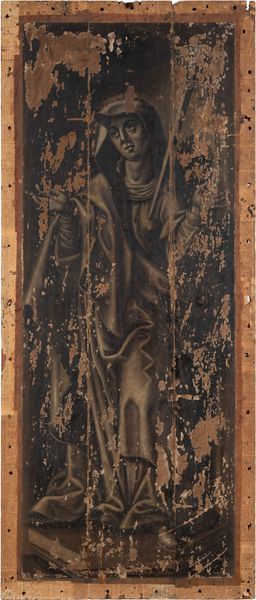
The Circle of the Traitors; Dante's Foot Striking Bocca degli Abbate 1827
0:00
0:00
print, engraving
#
water colours
#
narrative-art
# print
#
figuration
#
romanticism
#
history-painting
#
engraving
Copyright: National Gallery of Art: CC0 1.0
William Blake made this illustration to Dante’s "Inferno" using a copper plate and acid. This intaglio printmaking process has deep ties to industrialization. Blake would have coated the plate in a waxy, acid-resistant ground, then scratched an image through it with a sharp tool. The plate was then submerged in acid, which bit into the exposed copper, leaving an engraved line. The plate would then be inked and wiped, leaving ink in the etched lines, and run through a printing press. The copper itself is significant. This wasn’t a precious material, but an industrial one, a workhorse of the print industry. Acid etching, although painstaking, also allowed for multiples, tying art production to capitalist modes. In Blake's hands, the industrial process of printmaking is imbued with a deeply personal vision. By attending to these details, we recognize Blake's radical fusion of craft, design, and materiality.
Comments
No comments
Be the first to comment and join the conversation on the ultimate creative platform.
